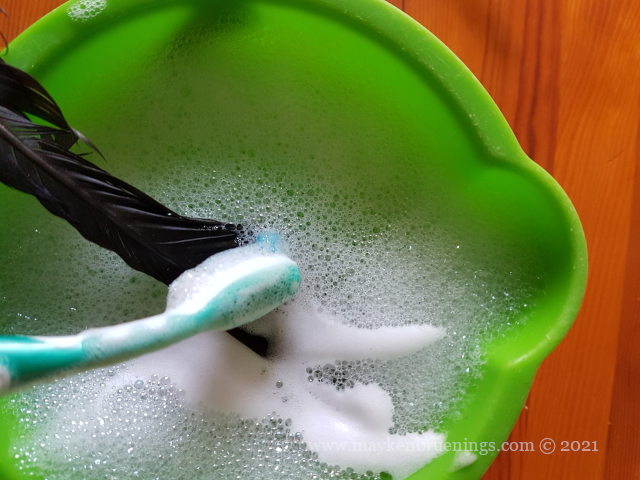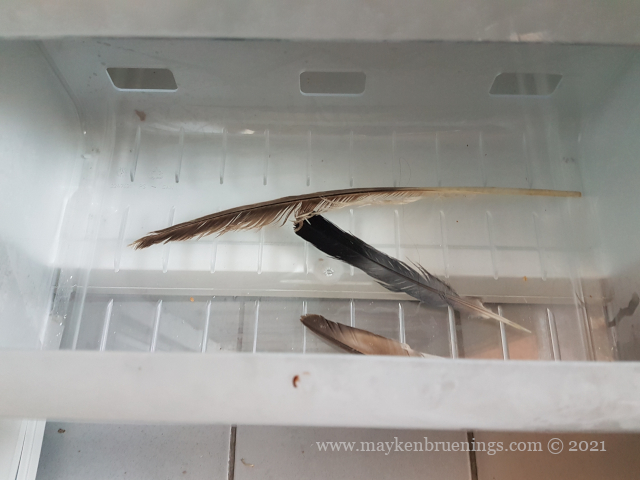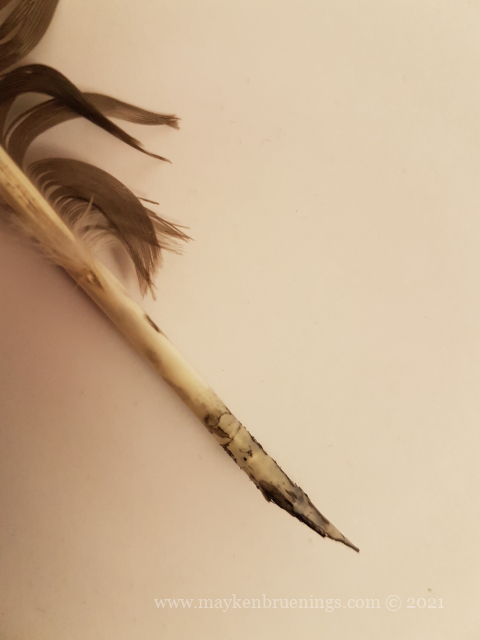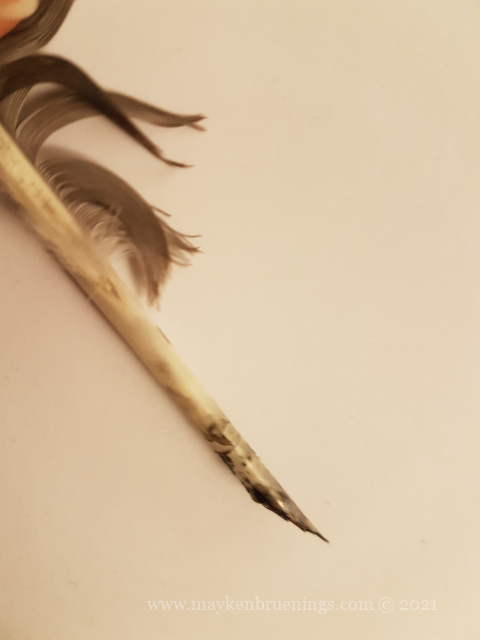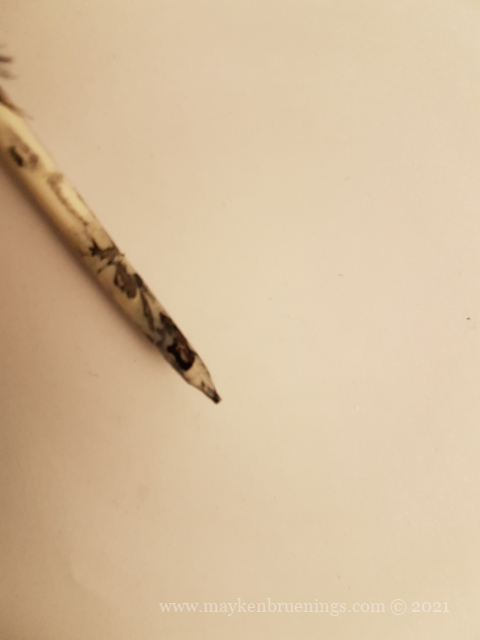During research for my time travel story set in the French Renaissance in the early 16th century, my fingers started itching to use a feather quill as my time-traveling protagonist did. I found some how-to websites and got started.
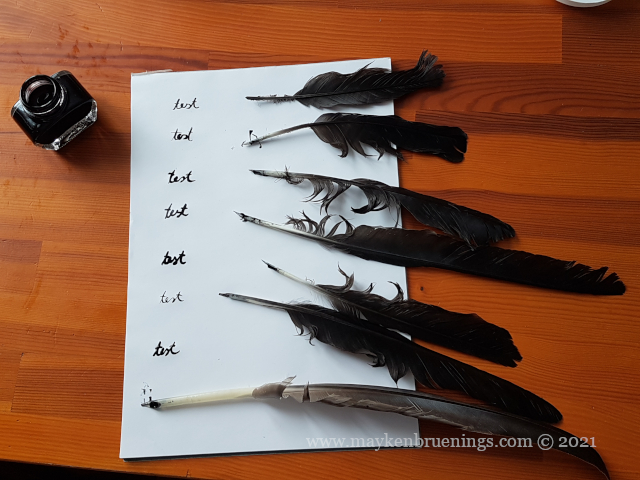
First, obviously, you need some nice feathers. I’ve been told the use of certain birds’ feathers may be forbidden in some countries, so please make sure you know where your feather comes from.
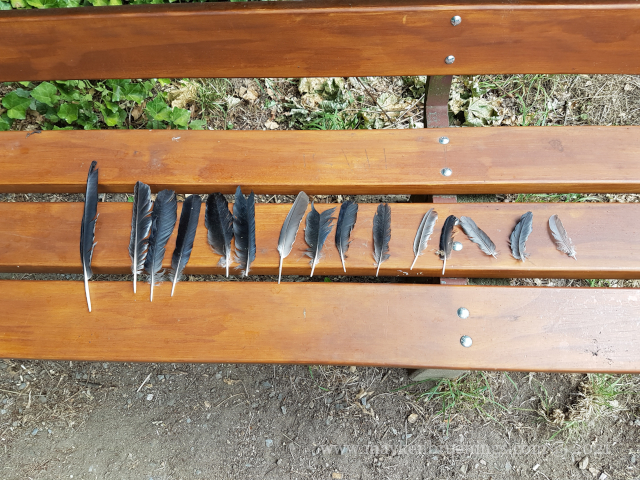
Find feathers in a park 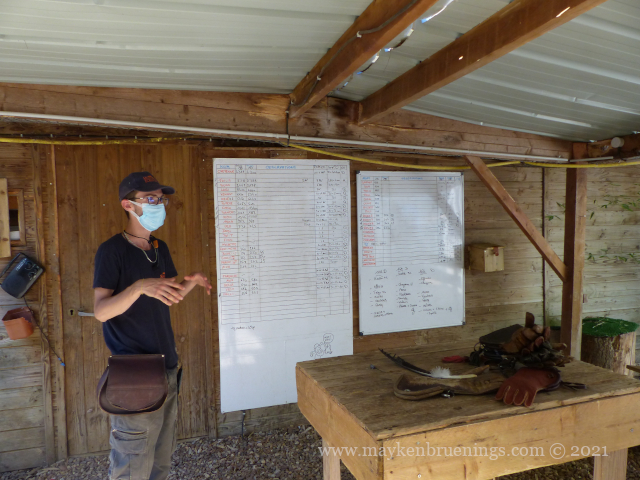
Know someone at the Zoo?
Other items you will need:
- Soapy water and an old toothbrush or
- Space in a freezer
- A recipient big enough your feather fits completely in
- Sand
- An oven-proof recipient
- A sharp knife, an x-acto knife or a cutter work best
- A cutting board
- Ink and paper
One internet source says to scrub them in soapy water (with an old toothbrush, for example). During a zoo visit, a bird keeper told me that leaving the feathers in the freezer for a day or two would kill off any vermin. (I left mine for two days, to be on the safe side.)
If you wash them, the next step is obviously letting them dry.
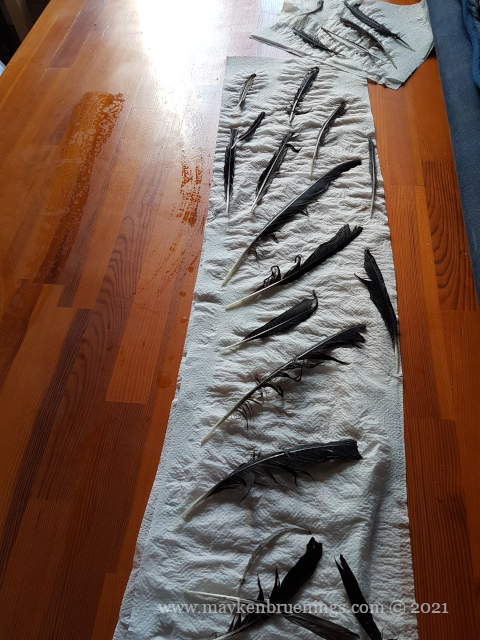
Then you shave off the fibers near the tip because once you dip your quill into the inkwell, you don’t want to have them dripping with ink.
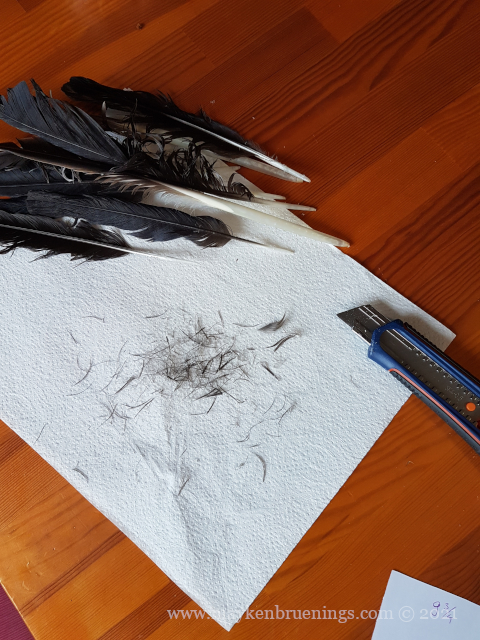
Next you leave them in water overnight. The instructions say this makes them soft and easy to bend.
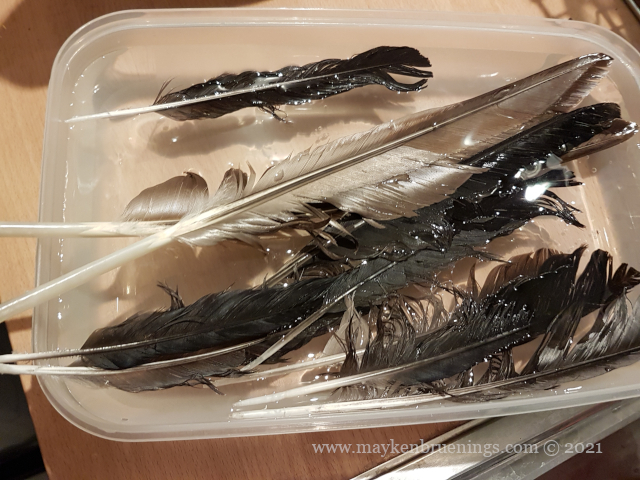
Again, you let them dry.
Heat sand in the oven to 350°F/175°C. Stick the feathers into the hot sand once you take it from the oven and leave them in there while the sand cools. This is supposed to harden the feather so you won’t have to resharpen it too often.
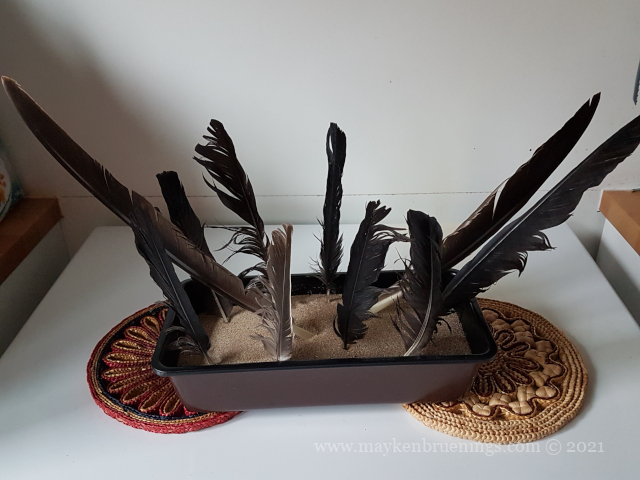
Now comes the trickiest part – cutting the tip into the right shape. Be warned, the feather is still surprisingly hard and cutting it in the shape you want will not be easy. Use a pen to trace the shape on the tip and then cut along your markings. This is more carving than cutting, actually. Once your nib has the right shape, you need to make a split at the center.
Now all you need is an inkwell, paper, and some practice. Look what my 10-year-old daughter did when I let her choose one of my feathers.
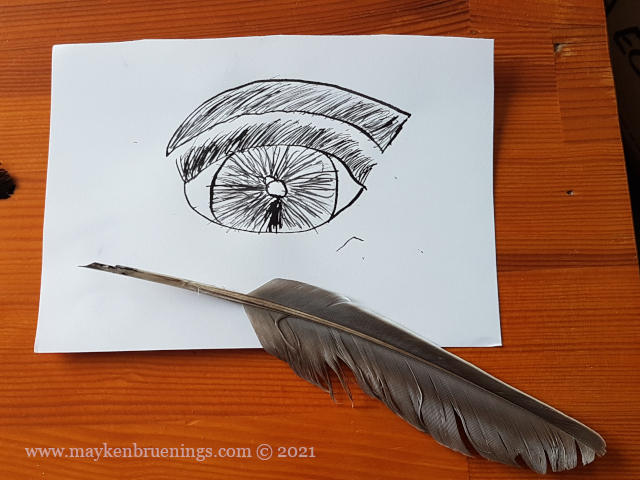
And to round it off nicely, here’s some history:
In Europe, the feather replaced the reed pen for writing in the 6th century CE. The birds whose feathers were most commonly used besides the goose were raven, duck and grouse for fine writing, and vulture and eagle feathers for bold writing. The feather dominates writing in Europe through the Middle Ages, Renaissance and Classical Period, until the invention of the metal-tip pen in the 19th century.
My web sources: https://www.wikihow.com/Make-a-Quill-Pen-out-of-a-Feather and https://minervaspencer.com/how-to-make-a-quill-pen-the-real-way-and-also-the-cheaters-way/

